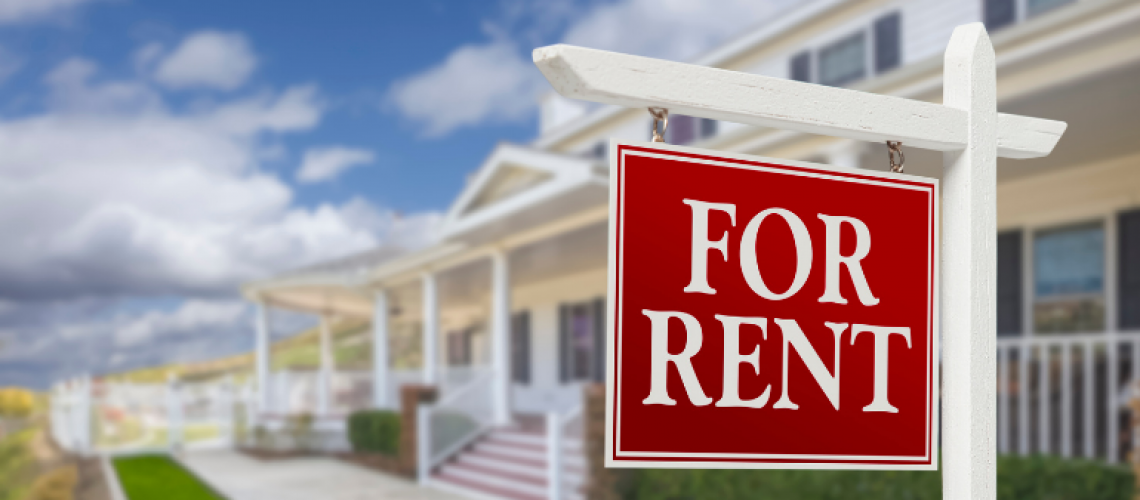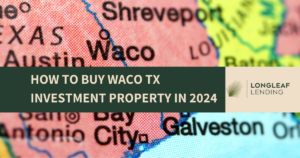It’s no secret that rental properties are one of the best ways to build wealth with real estate.
They’re accessible. They’re scalable. And they’re relatively passive.
That said, there is some work involved. And if you have no clue how to manage a rental property, things can go south quickly.
Before diving headfirst into an investment, you need a game plan.
To keep you on the path to rental property success, here are some of the biggest dos and don’ts.
How to manage a rental property like a pro
Effective property management can be broken into three parts:
- Managing money
- Managing tenants
- Managing the rental home
All three parts must work in unison for a successful investment. If not, you’re in for some headaches.
Let’s take a closer look at each of these property management basics.
Managing money
All types of real estate investing require a thorough financial plan. This is your foundation. Before you invest a penny, make certain that the property is good rental material. That means:
Choosing the right type of property. Single-family homes tend to attract more families and long-term renters than condos. But if you already have a portfolio of single-family homes, a condo could be a good way to diversify.
Choosing a rentable location. Look for neighborhoods where rentals are in high demand. A good school district will attract families. Easy access to interstates is another plus. Research the neighborhood before pulling the trigger. Does it seem like an area where home values will appreciate over time?
Doing the math. What are similar houses in the neighborhood renting for? What would your monthly mortgage payment be? Estimate your cash flow, and create a Plan B for a worst-case vacancy scenario. Rental property calculators can help you run the numbers.
If the financials don’t work out, it doesn’t matter how well you manage the property or your tenants. It won’t be a fruitful endeavor.
Choosing the correct loan type
The best rental property opportunities get snatched up quickly. You won’t always have time to go through a bank’s lengthy mortgage process to finance a property.
If housing market trends indicate a hot market, you have to act quickly.
One way to secure fast funding is through a private money lender. These lenders often offer long-term rental loans designed specifically for real estate investors.
Before searching for properties, familiarize yourself with what private money lenders look for when making loan decisions. Better yet, reach out to various lenders and start building relationships. That way, when opportunity strikes, you’re ready.
Setting up a bulletproof accounting system
Bookkeeping for your properties cannot be an afterthought. Set up a system from Day 1. Then stick to it.
Doing so not only makes tax time easier, but also allows you to track your financial progress. This clarity will help you make more informed investment decisions down the line.
When accounting, organization means separation.
That means keeping business and personal finances completely separate. Mixing them is a recipe for disaster.
You’ll also want to open separate accounts for each of your rental properties. If you’re a spreadsheet person, create a separate cash flow spreadsheet for each property. If not, use rental property accounting software to help you stay organized.
Managing tenants
The first step to managing tenants is actually finding them. To do this, post your property in as many places as possible. This should include popular real estate sites like Zillow and Realtor.com, as well as online classifieds like Craigslist and Facebook Marketplace.
Tenant screening 101
Your tenants can make or break your experience as a landlord. Do not take the screening process lightly.
To make your job easier, set some tenant requirements. These guidelines allow you to quickly and objectively sift through rental applications. For example:
- What’s the minimum income and credit score you will accept?
- Will you allow smokers and pet owners?
- How many references will you require?
- Do you need a background check?
- Will you take your chances on tenants without prior rental history?
- What’s your minimum lease length?
You can include some of these requirements in your rental listings to cut down on unqualified applicants. You can also save time by having prospective tenants fill out a rental questionnaire. Just be careful not to break any federal laws on tenant screening.
Before selecting a tenant, call their references and previous landlord to make sure everything checks out.
Setting up a rental contract
In a perfect world, we wouldn’t need contracts. Everyone would follow the rules, and there would be no issues.
But we don’t live in a perfect world.
Writing a rental agreement can be intimidating for first-time landlords. Fortunately, you don’t have to start from scratch. There are plenty of free lease agreement templates online you can borrow.
At a minimum, your contract should include:
- Any applicable fees (parking, trash, pets, etc.)
- Property rules
- Tenant responsibilities (lawn care, minor maintenance, etc.)
- An expectation of rental price increases
- Monthly rent amount and payment method
- Late rent policies
- Move-in date
- Rental term
- Utility information
- Security deposit
To avoid potential issues with the security deposit, walk through the property with your tenant and fill out a move-in inspection. Work together to document the condition of the property before they move in, and include any defects.
That way, if they damage something, they can’t say, “It was like that when I moved in!”
Resolving tenant issues
A thorough screening process will prevent many tenant issues, but sometimes difficult tenants slip through the cracks.
The two most common problems are late payments and gripes with other tenants (for multi-family homes).
Deal with inter-tenant complaints swiftly. The last thing you want is for good tenants to move out because they can’t stand a bad tenant. Mediation isn’t fun, but neither is an empty property with negative cash flow. If you include rules in your lease agreement that anticipate potential problems (e.g., drugs, late-night parties), it’ll be easier to intervene.
The same goes for late payments.
By setting clear policies in your rental contract, your tenants know what to expect if they break the rules. There are no surprises.
Evictions are unlikely with properly screened tenants. But if things turn south, familiarize yourself with local laws before making any rash decisions. In most cases, you must give the tenant an official eviction notice, file the eviction with the courts, and avoid accepting any payments until the court ruling.
Managing rental properties
The last piece of the puzzle is managing the property itself. The better you maintain the property, the happier your tenants will be. And happy tenants mean low turnover.
The self-management approach
If you live near your property and don’t mind making yourself available 24/7, DIY property management increases cash flow.
As a landlord, your number one goal is to keep good tenants happy.
That means responding to concerns as quickly as possible, proactively checking in, and scheduling periodic rental visits.
By keeping close tabs on the property, you can anticipate problems and avoid costly repairs. A bi-annual walkthrough not only shows tenants you care about giving them a comfortable living space, but also motivates them to treat it with respect.
You can further entice tenants by upgrading appliances or including landscaping services. These extra perks aren’t mandatory, but they’ll make it harder for tenants to leave.
The property management company approach
Managing an investment property isn’t for everyone.
If you live in a different city or simply do not have time to manage it yourself, you can hire a management service to take care of your property for you.
Property managers typically charge between 8% and 12% of the monthly rent. If you have tight margins, it might not make sense. This is why it’s important to run the numbers before pulling the trigger on a property.
If you have enough positive cash flow, a property management company takes care of all the dirty work and makes your investment completely passive. They can also save you money. Their marketing experience can help maximize occupancy, and their industry connections can reduce maintenance, repair, and legal fees.
The bottom line
Learning how to manage a rental property doesn’t happen overnight. You can read a hundred how-to guides, but the real learning comes through hands-on experience.
Once you have your first rental up and running, you can use the extra cash flow to save for the next one. By then, you should have your property management system down pat.
If you need help funding your next project, check out our loan products designed specifically for real estate investors.
The Do’s and Don’ts Recap
Do’s
- Calculate estimated cashflow before investing
- Choose property type and location wisely
- Keep each property’s books separate
- Set clear policies in your lease agreement
- Go through a move-in inspection with your tenant
Don’ts
- Don’t mix business and personal finances
- Don’t wait until opportunity strikes to try to figure out the best lender and type of loan
- Don’t skimp on the tenant screening process
- Don’t procrastinate in resolving tenant issues
- Don’t forget to schedule periodic rental walkthroughs









